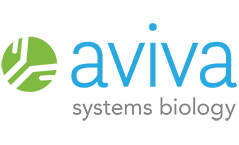Reconstitution and Storage Instructions
This is to be used as a general guide for reconstituting and storing all of Aviva’s lyophilized antibodies. Product specific information will be on the product datasheet included in the order. Aviva cannot guarantee functionality of its antibodies that have been reconstituted or stored improperly.
Reconstitution of Antibodies:
Many of Aviva’s antibodies come lyophilized for maximum stability. Lyophilized antibodies can be stored at -80C or -20C for up to 10 years without functional compromise. There is no appreciable benefit of storing at -80C vs -20C.
Before reconstitution, centrifuge the vial of lyophilized antibody at 12,000 x g for 20 seconds. This will help pellet the entire antibody sample for reconstitution.
For reconstitution, we recommend adding sterile, distilled water to achieve a final antibody concentration of 1mg/mL (e.g., for 50ug samples, add 50uL of dH2O; for 100ug samples, add 100uL of dH2O). After the addition of water, recap vial and briefly vortex making sure that the liquid has been evenly distributed and has covered the entire inside of the vial. After vortexing, centrifuge again to pellet the solution. This 1 mg/mL antibody solution is now in 1X PBS and 2% sucrose (the PBS + sucrose are lyophilized with the antibody).
Reconstitution of Peptides:
Lyophilized peptides can be stored at -80C or -20C for up to 10 years without functional compromise. Lyophilized peptides should be briefly centrifuged to pellet all material. Peptides should then be reconstituted to a concentration of 1mg/ml in sterile PBS (e.g., for 100ug samples, add 100uL of 1X PBS). After the addition of PBS, recap vial and briefly vortex making sure that the liquid has been evenly distributed and has covered the entire inside of the vial so all lyophilized peptide goes into solution. After vortexing, centrifuge again to pellet the solution.
Reconstitution of Cell & Tissue Lysates:
All of Aviva's cell and tissue lysates come lyophilized for maximum stability and utility. Lyophilized lysates can be stored at -80C or -20C for up to 10 years without functional compromise. Simply reconstitute to desired concentration with dH2O or 1XPBS, adding glycerol to a final concentration of 10%. After the addition of dH2O or PBS, recap vial and briefly vortex making sure that the liquid has been evenly distributed and has covered the entire inside of the vial so all lyophilized lysate goes into solution. After vortexing, centrifuge again to pellet the solution. Then, remove desired amount, heat at 100C for 10min and load on to gel. The lysates comes lyophilized with SDS-PAGE buffer containing the reducing agent, DTT.
Storage:
Aviva recommends storing small, single-use aliquots of reconstituted antibodies, peptides or lysates in 50% glycerol at -20C, not -80C; preferably in locations in frost-free freezers without appreciable temperature fluctuation. This will minimize protein denaturation that can occur after multiple freeze/thaw cycles. Reconstituted antibodies, stored properly, are functionally guaranteed for up to 1 year from date of reconstitution. Any unfrozen and/or unused material can be stored at 4C for short term use (<1 week), and should not be re-frozen. Please refer to the datasheet for product specific storage information as our guarantee only applies to antibodies, peptides or lysates stored as recommended on the datasheet. Caution:glycerol may interupt some downstream antibody applications.
The use of sodium azide can be used to prevent microbial contamination. Aviva recommends attaining a final concentration of 0.02 - 0.05%(w/v). Do not add sodium azide to antibodies that will be used 1) to treat or stain live cells, or 2) before any primary amine coupling reaction.
All conjugated antibodies should be stored in light-protected vials or covered with a light-protecting material (i.e. aluminum foil). Exposing conjugated antibodies to light will affect the activity of the conjugate, especially fluorescent conjugates.
Enzyme conjugated antibodies should be stored at 4C. Freezing and thawing enzyme conjugated antibodies will compromise enzyme activity as well as antibody binding.
